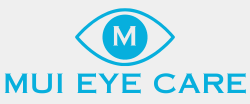Learn more about the Eyes and Their Needs

Why Are Eye Exams Important?
Like physical body check ups, maintaining ones vision and eye health at any given time is important. Not only do eye exams have the potential to improve ones eyesight, but also maintain eye health by catching eye diseases at the beginning stages and treating them as soon as possible.
Nutrients for Maintaining Eye Health

Foods rich with Omega-3
Commonly found in certain fatty fish and plant-sources such as seeds and nuts, including but not limited to:
Salmon
Herring
Mackerel
Anchovies
Chia Seeds
Walnuts
Flaxseed
Caviar
Omega Fatty Acids can help reduce the risk of high eye pressure and prevent and treat dry eye syndrome.
Leafy green vegetables rich in Lutein and Zeaxanthin
High amounts of these two important carotenoids can maintain eye health and reduce the risk of certain eye diseases such as age-related macular degeneration (AMD), cataracts, and diabetic retinopathy. These antioxidants can be found in, for instance:
Almonds
Pumpkins
Collard Greens
Pine Nuts
Almonds
Pumpkins
Collard Greens
Pine Nuts






